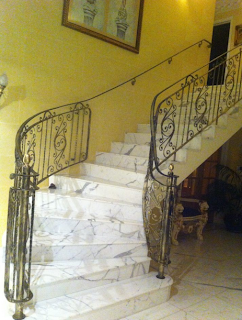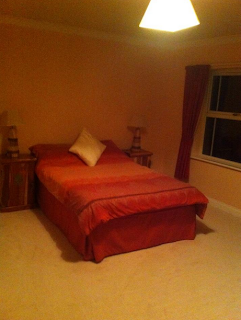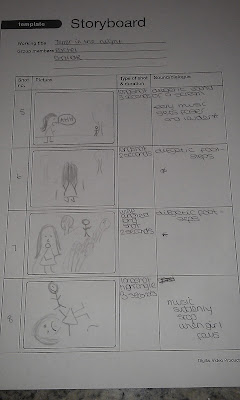The next stage of our continuity editing task was to film it using our storyboard to guide us.
Problems we faced
The first problem we faced was the fact that our storyboard wasn't detailed enough which meant that we ended up having to add in and film extra shots which we had missed when drawing it. Therefore we have learnt that when it comes to drawing our storyboard for our final piece we should ensure that its much more detailed and we should consider briefly trying out a couple of shots to see if they will work and be successful.
Next, one of the props we had planned to use when planning the task had to be changed when it came to filming because it wasn't practical or possible to use. We planned to have our protagonist look through a pile of paper, however, when it came to filming we discovered this would not be possible because every time our actress attempted to do this, the stack of papers fell over. Therefore, to overcome this problem we decided to use a stack of paper trays instead. This worked well because it provided the same effect and was much more practical.
Finally, our narrative turned out to be slightly too simple which restricted our technicality. Therefore, we adapted it to add a bit of complexity to the narrative and allowed us to showcase a wider variety of technical skill which we would have been unable to do if we'd not made any changes.
What we think went well
Firstly, we made sure we started filming as soon as possible after planning and creating our storyboard. This then gave us plenty of time to edit our product. We also managed to include all the technical requirements to do with camera work whilst filming such as not breaking the 180 degree rule, and including a shot/reverse. Finally, we have gained knowledge and experience about filming which will help us all when we start filming for our final product.
Evaluation
I have learnt many things from this experience, firstly, my group and I will need to ensure our storyboard for our final piece is much more detailed to provide a strong base and starting point for when we start filming. As well as this, it will give us a detailed guide that we will be able to follow when we're filming. We will also have to ensure our ideas are practical and that we use appropriate props within our final product. We should also make sure we continue to manage our time well as a group to ensure we stay organised and on top of our work in order to meet deadlines.














